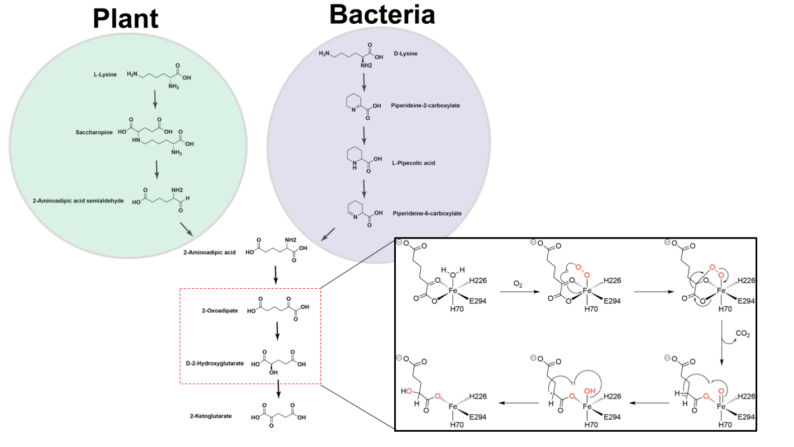Lysine is an important amino acid that must be supplied in our diets, as our bodies can’t produce lysine on their own. Most cereal grains have low levels of lysine, and scientists have worked to breed crops with higher lysine levels.
However, the biochemical processes that break down lysine in plants weren’t fully understood. New Joint BioEnergy Institute (JBEI) research, published in Nature Communications, reveals this last missing step of lysine catabolism.
“With this final piece in place, we hope that future efforts to engineer lysine catabolism in plants will be done with a better understanding of potential changes in global metabolism,” said Mitchell Thompson, one of the study’s co-first authors and a postdoctoral researcher at JBEI.

A better understanding of lysine catabolism also has practical applications for engineering sustainable chemical products. This knowledge allowed the researchers to engineer Pseudomonas putida to produce high levels of valerolactam, a precursor to many polymers. It also helped them create biosensors that could be useful tools for sustainably producing chemicals that are currently made from petroleum.
Thompson worked with researchers from many Berkeley Lab divisions and other collaborating institutions on this project. “The work here spans microbial genetics, comparative genomics, biochemistry, structural biology, and plant physiology,” Thompson said, underscoring its interdisciplinary nature.
“The initial motivation for this study was merely to characterize the way in which P. putida was able to metabolize a polymer precursor,” Thompson said. “Little did we know that by leveraging the new genetic tools developed at Berkeley Lab, we would make so many new discoveries.”